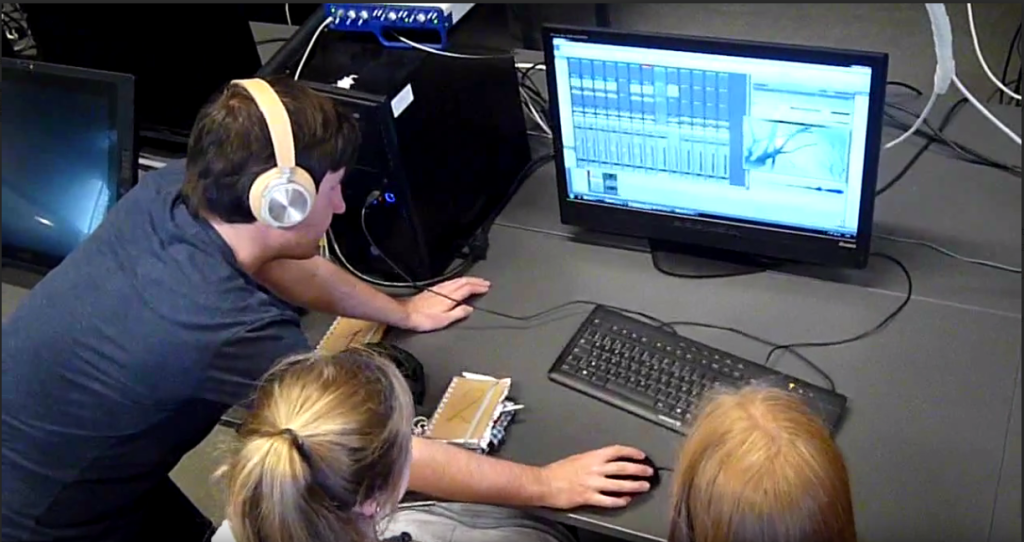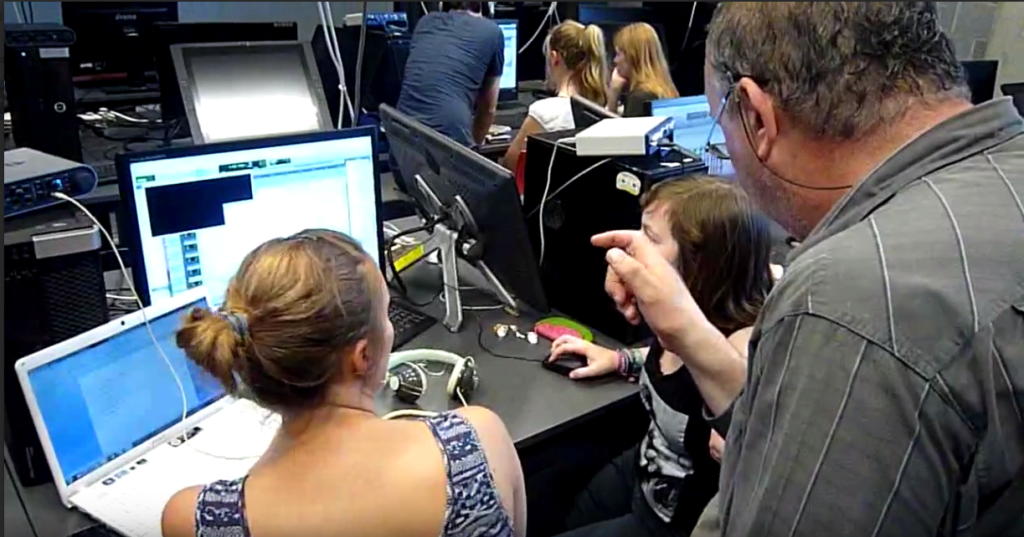Students collaborate in groups of 2 or 3 to create a short movie. During the first month we focus on preproduction and the co-creative development of a storyboard/score, whereby music composers and filmmakers are equal partners. After one month, production starts and composers and filmmakers work individually with intermediary feedback moments.
|
Phase |
Classes |
Description |
|---|---|---|
| Classes 1-4: concept design | In the preproduction phase students work closely together to develop the concept of the film as equal, co-creative partners. Hereby they use the format of the storybord/score (or storyscore) instead of the classical script, and investigate which forms of interdiscipliary communication to use. | |
| Classes 5-10: production | In the production phase it becomes important that musicians and filmmakers are given the time to implement their respective parts individually, with coaching of their specific teachers. Nevertheless we organize weekly feedback moments where both comment on the others’ work. There are also a number of joint sessions, such as music rehearsal, where everybody is present. | |
|
|
||
The teaching strategies we apply are the result of an iterative process. Each subsequent year the setup of the course has been finetuned, based on our observations and feedback of the research committee.
Positive remarks from the beginning:
- In general students consider this way of working as very inspiring and highly informative of the artistic practice of their colleagues.
- The research-based approach fits well in the educational philosophy of both education programmes and of the view that LUCA School of Arts propagates regarding the integration of theory, practice and research.
Challenges that were met:
- Work load and planning. Although it is important that we provide sufficient space for research and preproduction, due to the time-costly nature of animation film production, it is necessary that production is spread over a longer period of time. As such the first 4 classes follow up on one another very quickly, whereas the last 4 classes are spread over the remainder of the semester.
- Synesthesia. In the first year we spent considerable time introducing students to the basic concepts of the other discipline on a theoretical level. We observed that this was counter-productive, as it stimulated students to stay within their traditional roles. It made them feel they were not sufficiently qualified in their colleagues’ field, which restrained them from providing creative input. From the second year on, theoretical explanations were integrated in individual coachings and were provided in a more hands-on way.
- It is important to have students develop a personal trajectory. This requires maturity of the students, but connects more closely to the reality of artistic practice, as there exists no single ‘best solution’ to our research questions.

